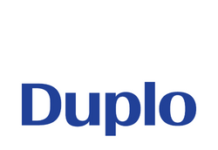Press release submitted on behalf of R.R. Donnelley & Sons Company
R.R. Donnelley & Sons Company (RRD), a leading global provider of marketing, packaging, print, and supply chain solutions, highlights the impact of continued eCommerce growth based on its 2023 (Un)Packaging Reality Report. Sixty percent of RRD’s survey respondents reported continued upticks in eCommerce orders through 2022, and of those, 62% said they are working to level-set expectations for inventory due to over-corrections on COVID-19-related shortages. Findings also suggest brands are giving similar attention to packaging design for online and in-person retail.
Who Saw the Rise?
Survey respondents represented packaging and labels decision-makers from a wide range of different product categories. The top categories seeing upticks in eCommerce orders were center aisle food brands (77%), personal care and cosmetics brands (72%) and household products (68%).
Across all categories, 92% of affected respondents reported an increase in packaging needs and 86% saw an increase in labeling needs over the past year. However, respondents from the appliances and durable goods category seemed uniquely impacted. While 64% of packaging and label decision-makers in this category reported a rise in eCommerce orders, 98% reported increased packaging needs tied to eCommerce activity.
“Many Companies found themselves playing catch-up to secure operations support following the peak of the COVID-19 pandemic,” said Lisa Pruett, President of Packaging & Labels Solutions at RRD. “But now, as market conditions are steadying, we’re seeing companies return to more strategic decision making around their packaging and label needs — all in an effort to increase efficiency and agility while trimming unnecessary costs.”
Why the Level-set?
Due to supply chain and other market pressures in the past year, 87% of overall respondents cited changes to how packaging and/or labels were sourced. Among those impacted by rises in eCommerce orders, half increased inventory, 36% increased staff, 34% expanded warehousing, and 39% increased support from external vendors. These investments in packaging and labeling operations may have been made to alleviate the pain points created by global supply and workforce shortages seen over the previous years. However, findings also indicated a dip in reported staffing challenges and fewer demands or strains on capacity compared to the previous year’s survey.
“Coming to terms with these persistent challenges should motivate organizations to place more of an emphasis on forecasting,” said Pruett. “We continue to see our own clients as benefactors of this method as it puts them in a better position to make informed decisions and accommodate evolving market conditions.”
Similar Attention Placed on Design for Online vs. In-Person Shoppers
Overall, nearly three quarters (72%) of respondents made changes to existing package designs. Of those who altered packaging design, 23% claimed to have altered design to enhance appearance or functionality for brick-and-mortar retail.
Meanwhile, among those who reported an increase in eCommerce labeling needs, 37% developed an eCommerce specific package design and/or structure. These findings suggest comparable attention is being paid to package design for eCommerce vs. brick-and-mortar retail, underscoring just how critical online retail has become to the overall health of brands.
To read the full report, visit: rrd.com/reality-report-2023.





